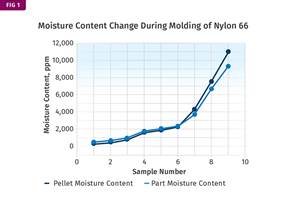Specialty formulations that zero in on target applications and offer more efficient processing, and in many cases sustainability, are key themes in the wide range of new materials and additives that will be showcased at NPE2018. Expect to see several customized engineered compounds and TPEs targeted on automotive, electrical/electronics, consumer goods, industrial, building/construction, healthcare, and additive manufacturing.
Advanced polyolefins and bioplastics for sustainable flexible and rigid packaging will also be highlighted. Moreover, there will be new bioplastics and post-consumer recycle (PCR) engineered compounds for structural applications, automotive, electronics, and consumer products. Specialty PVC compounds for building and construction and short- and- long-glass reinforced PP for automotive will also be on hand, as will some intriguing acrylic products and more efficient purging compounds. Expect to see new 3D-printing materials as well.
Reinforced thermoplastics are the subject of a new guide to replacing metals in a wide range of applications.
In additives, look for a nucleating agent and modifier for PP impact copolymers, and additive masterbatches for improved scratch and mar resistance in automotive filled PP and TPO; impact modifiers for TPEs; and a blowing agent and compatibilizer geared to reinforced nylon and recycled PE/nylon alloys, respectively. Also on hand will be stabilizers and modifiers for engineering resins and polyester alloys. Look for advances in natural silicates as flame retardants for wire and cable, new colorants for bioplastics, and a black masterbatch that rivals carbon black in glass-filled nylon.
SPECIALTY ENGINEERED PLASTICS
RTP Co. will feature a range of new applications made with its engineered thermoplastic compounds. RTP engineers will showcase 7-Steps: A Metal-to-Plastic Conversion Guide, a guideline for successful metal-to-plastic part conversion. RTP boasts extensive expertise in using filled thermoplastic compounds to replace metal in a wide range of applications.
Also new is a selection of thermoplastic alloys that demonstrate abrasion resistance comparable to UHMWPE but are designed specifically for injection molding. RTP’s Abrasion Resistant Alloys series is available in multiple resin and additive combinations to provide further functionality such as wear and friction resistance, flame retardance, and conductivity.
Lehvoss North America will focus its exhibit on customized material solutions and its expanding capabilities in custom compounding, additive manufacturing, and masterbatches. The Luvocom 1114 series, based on high-temperature-resistant PEKK, is designed to provide exceptional tribological and thermal properties. It is said to offer several advantages in tribological (wear) applications compared with other high-temperature polymers such as PEEK. The wear and friction characteristics of the Luvocom 1114 line reportedly exhibit a low and particularly uniform curve up to 329 F (165 C), plus elevated heat-deflection temperature.
Ascend Performance Materials will launch the latest additions to its Vydyne nylon 66 family: the XHT series of extreme-heat-resistant compounds. Said to represent a step change in Ascend’s heat-resistance portfolio, the series will debut with two grades for demanding automotive applications and capable of withstanding prolonged exposure at 410 F (210 C) and 446 F (230 C).
Modifications in both polymer and heat-stabilization technologies position the XHT series as an alternative to higher cost materials typically specified for such applications as high-heat underhood components like charge-air coolers and air ducts.
Teknor Apex Co. will showcase Chemlon 102HI BK001, its “next-generation” nylon 66 compound said to overcome cycle-time limitations of earlier grades, allowing molders of fasteners and similar parts to meet product performance requirements while increasing productivity.
Polymer Resources Ltd. will highlight its engineering resin compounds, including nylons, ABS, PC and blends, PBT, PEI, ASA/PC and PPE/PS. New customized services include a significant expansion of the company’s Express Services offering for compounds, a new expedited service for color matching, and additional stocking programs for shorter delivery times.
BASF will showcase parts resulting from successful collaborations with various customers. For instance, BASF has been working with truck and trailer manufacturer Wabash National Corp., Lafayette, Ind., to develop an all-plastic composite refrigerated trailer, part of which will be on display. Lighting Technologies, Oxford, Mich., will show a sustainable, lightweight composite pallet. Also on hand will be a prototype lightweight robot collaboratively developed with Shanghai’s SIASUN Robot.
Arkema will highlight new applications with its Kynar UHM PVDF fluoropolymer. Included is foamed PVDF, a breakthrough technology first launched by the company in 2013, as well as the more recent development of glass-reinforced grades that have opened up new applications that require a stiffer, stronger, and higher heat-resistant fluoropolymer, such as pipes, fittings, valves, nozzles, clamps, fluid connectors, wires, tanks, and cable insulation.
PolyOne will highlight its “extreme-heat” compounds based on PEEK, PES, PEI, PPS, PSU and PPSU, the result of its 2016 acquisition of Germany’s Comptek. Properties achieved with these materials include transparency, electrical and/or thermal conductivity, laser marking, and X-ray opacity.
SABIC will present a broad range of innovative materials from both its petrochemicals and specialty plastics portfolios by featuring a wide array of end-use applications across multiple industries, including automotive, building and construction, consumer goods and electronics, healthcare, mass transportation, packaging, and personal hygiene. SABIC will also display at its booth new and emerging technologies in additive manufacturing and composites. Among them:
• Glass-reinforced Noryl PPE alloy will be featured in a water-filtration module from Cerafiltec of Saudi Arabia. Noryl’s hydrolytic and dimensional stability and chemical and heat resistance enabled Cerafiltec to replace corrosion-prone steel framing with a fully injection molded design.
• Lexan CXT high-clarity, high-heat, injection moldable PC copolymers offer a balance of high-temperature resistance, high flow, and excellent color stability under extreme molding conditions, together with a high refractive index. The materials were designed for use in optical applications in the electronics, consumer, industrial, and healthcare industries.
• Lexan DH65011 thermoformable sheet is opaque, low-gloss PC/ABS that is compliant with the U.S. Federal Railroad Administration (FRA) NFPA 130 fire-safety standard for passenger railcar interior walls, ceilings and seat frames. It offers numerous decorative customization options.
• Udmax GPE 46-70 tape, the newest addition to SABIC’s portfolio of unidirectional fiber-reinforced thermoplastic composite tapes is glass-filled HDPE, which may be used for reinforcing industrial components such as oil, gas and water pipes and pressure vessels. Featuring high tensile strength, it offers one of the highest glass contents available today, (70% by weight, 46% by volume) combined with optimal fiber impregnation, thanks to SABIC’s proprietary high-pressure technology.
• Ultem UTF120 PEI 7-μm dielectric film, developed for capacitors in higher-voltage applications that require thicker film with greater storage capacity, is the second in a planned portfolio of high-performance dielectric films featuring different thicknesses to help meet customers’ specific voltage requirements. SABIC, which launched a 5-μm Ultem UTF120 film last year, claims to be the only materials supplier offering extruded PEI film at these thicknesses.
SABIC also plans to unveil several new technologies, including a portfolio of PP compounds for improved haptics in automotive interiors; a series of heat-resistant LNP compounds for electronics; two healthcare filament grades for additive manufacturing; and a carbon-fiber hollow-core aircraft seat back.
MORE CUSTOMIZED TPES EMERGE
Kraiburg TPE will feature its custom-engineered TPE solutions, including new grades and target applications within consumer, industrial, automotive and medical markets. Product innovations include the newly launched VS/AD/HM series for consumer electronics that offers silky, satin-smooth surfaces with high-scratch/abrasion-resistance, excellent durability, and resistance to chemicals such as skin oils, creams, and common household detergents.
The VS/AD/HM series also offers excellent adhesion to polar thermoplastics such as PC, ABS, PC/ABS, PU, ASA, SAN, and nylons 6 and 12. Available in natural color and black, their applications include controllers for game consoles, remote controls and headphones, toys, protective covers for mobile phones, tablets, and cosmetics packaging.
Also to be showcased is Kraiburg’s FC/ht series of highly transparent materials for applications such as food packaging seals, toothbrush handles, detergent pods, and toys. This series of TPEs is characterized by its excellent adhesion to PP as well as high flow. It boasts a smooth, non-sticky feel and, due to its high transparency, is suited to applications requiring custom pigmentation or vibrant colors.
New PE resins and other recent innovations are enabling multilayer moisture- and oxygen-barrier food packaging to move from non-recyclable structures to recycling compliant structures.
Turkey’s Elastron, a global producer and marketer of TPEs for over 35 years, plans to open a North American headquarters in Gainesville, Ga. Last year, the company announced a partnership with thermoplastics distributor M. Holland Co. to provide an alternative source of TPVs and other TPEs to the North American wire/cable market. The two have been qualifying Elastron TPEs ahead of the new 32,000 ft2 Gainsville compounding facility, due on stream in the third quarter. The facility will produce a broad range of thermoplastic elastomers including TPV, TPO, SBS and SEBS. Elastron USA will serve all major markets, including automotive, industrial, construction, medical, consumer and E/E.
Star Thermoplastics will showcase its expanded StarSoft line of super-clear TPEs that now include an array of super-soft, gel-like materials. There will also be newly enhanced flame-retardant and conductive TPE compounds, as well as an expanded line for extruded profiles and sheet. PolyOne will feature its low-VOC/fog/odor OnFlex LO TPEs for auto interior components.
POLYOLEFINS FOR PACKAGING
Nova Chemicals will be demonstrating its Bonfire computer tool for modeling flexible film structures and its customized computer-modeling tool for caps/closures. For sustainable packaging, new PE resins and other recent innovations enable multilayer moisture- and oxygen-barrier food packaging to move from multimaterial, non-recyclable structures to recycling-compliant structures. Physical samples will be shown.
For e-commerce food packaging, Nova has been working with film processors, package makers, and brand owners to develop packaging with the durability (stiffness/toughness balance) and other properties that are required for the rigors of the e-commerce supply chain.
Meanwhile, ExxonMobil will demonstrate how to create differentiated solutions and will feature the following products:
- A new family of advanced polyolefins.
- New eXtreme Performance applications, including films for heavy-duty sacks and thermoformed barrier food packaging.
- Information about a new Exceed XP grade of hexene LLDPE that delivers eXtreme
- Performance coextrusion films for sachets, lamination packaging, frozen products and barrier packaging.
For packaging, SABIC will highlight its Flowpact high-flow PP impact copolymers for injection molding containers (food and non-food), caps and closures, as well as housewares and consumer goods. The newest addition is Flowpact FPC70 (MFR 70).
Rigid packaging made with this resin, including applications that can be hot-filled, is said to have much higher top-load strength than identical products made with benchmark materials. This results in better stackability for better transport and storage economics. FPC70 boasts polymer chemistry advances that yield a material with a balance of high stiffness, impact strength, and high HDT, unlike a standard PP impact copolymer. It is said to enable up to 10% thinner walls and fast injection.
NEW SUSTAINABLE MATERIALS
Emerging applications such as office furniture, kitchen cabinets, bathroom toilets, sinks and lids, as well as automotive applications for a new engineering bioplastic will be highlighted by Eastman Chemical Co. Last year, the company launched Treva, an engineering bioplastic that falls in the family of cellulose acetate propionate (CAP) but boasts a significantly higher HDT than standard CAP, making it more dimensionally stable and creep resistant.
Also key are low birefringence for excellent optical performance in electronic displays, and excellent flow in filling thin walls and complex shapes. It is said to be suited to structural applications with good aesthetics—from kitchen walls to home and office furniture—and to be durable for daily wear and tear. It can also address the needs of automotive interior designers seeking curved surfaces and shapes. Excellent chemical resistance and ability to withstand skin oils and sunscreens make it suitable for bathroom toilets and eyeglass frames, respectively.
Total Corbion PLA will feature its Luminy PLA portfolio for the Americas. Included are a range of high-heat, high-performance crosslinked PLA homopolymers—PLLA and PDLA—which are targeted to applications requiring durability and/or high-heat resistance. Visitors will see several commercial applications, including coffee capsules, teabags, heat-stable bottles, and a thermoformed food platter that has a “stone-look” slate appearance. PCR-containing products launched in the past year by Wellman Advanced Materials include:
- EcoLon 3100-BK1 is a PCR nylon 6, with superior flow and performance properties and better cost efficiency vs. current EcoLon 2100, for use in automotive parts like fan shrouds.
- EcoLon GFT3040-BK1 is a first-of-its-kind, impact-modified PCR nylon 6 with superior low-temperature impact, minimum CLTE, and good HDT. It boasts performance comparable to a virgin nylon 6 with significant cost savings and sustainability.
- EcoLon 1619-BK3GB is a 20% glass/mineral-reinforced PCR nylon 6 said to offer a 19% density reduction, yet is comparable in cost and performance to equivalent virgin resin.
Techmer PM will highlight its collaborative project with plastics recycler Envision Plastics Industries, sustainability investors Primal Group, and blow molder Classic Containers, to overcome the challenges of creating a compound from 100% reclaimed ocean-borne plastics waste that would process successfully into a personal-care bottle with a silver metallic, pearlescent finish. Using its proprietary dispersion technology, Techmer PM was able to meet Primal Group’s requirements for a specific color and reflective finish on the bottle for its personal-care range called ViTA.
PURGING COMPOUNDS
Sun Plastech will launch its new UF2 purging compound for blown and cast film extrusion as well as injection molding. Like other Asaclean grades, UF2 is said to enable faster changeovers, resulting in increased productivity and cost savings. It can be purged through a die, effectively removes gels and color and carbon contamination that is not carbonized, and has excellent compatibility with PE.
It’s recommended for color and material changes, hot-runner cleaning and shutdown/sealing. As it does not work by chemical reaction, there is no soak time or hold-up time.
Asaclean will also highlight its N-Series of chemical purging compounds from its 2015 acquisition of Novachem: NCR Grade (formerly Supernova Regular) is a versatile, high-performance chemical purging compound well suited for color and material changes for thermoplastic injection molding and extrusion machines. NCT Grade (formerly Supernova HT) is a chemical purging compound for high-temperature resins such as Ultem, PEEK and LCPs that can process at temperatures as high as 750 F. NCF Grade (formerly Supernova FD) is a high-performance chemical purging compound suited for color and material changes in thermoplastic film extrusion, including both flexible and rigid PVCs. And NCH Grade (formerly Hybrid 400) is a high-performance compound said to offer the benefits of both mechanical and chemical purging agents for color and material changes in thermoplastic extrusion and extrusion blow molding.
Shuman Plastics will introduce Dyna-Purge F2, described as a “breakthrough technology” with proprietary agents formulated to flow naturally through a variety of processing equipment, including injection and extrusion machines. This low-residue purging agent features one component formulated to flow to the boundary layer, flushing out the resin. Another component acts as a pressurizing agent, allowing the purge to reach into stagnation points.
This dual-action cleaning removes material and impurities from the screw, barrel, mold or die. With a temperature range of 320-625 F, it is reportedly effective at purging virtually all resins. This non-hazardous and FDA-compliant compound is suited to purging hot runners and other channels with tight clearances.
iD Additives Inc. will introduce two new single-dose purge compounds that come in individual packets—expanding its original QuickShots liquid-in-pouch product line. These compounds allow operators to purge their machinery by simply dropping the packets into the feed throat/hopper of their machine, and they work with all resin types on all plastics machinery. New QuickShots HD (heavy duty) has glass prills mixed in for extra cleaning strength, and SP (pellets in a pouch) includes an extra-small 1/2-oz version for lab lines and small runs.
OTHER MATERIAL NEWS
Two new families of flexible PVC compounds will be highlighted by Teknor Apex. Its Apex 1523-LG Series compounds for automotive window encapsulation are said to exhibit gloss levels similar to those of EPDM rubber belt-line seals or glass-run channels, enabling manufacturers of PVC encapsulated windows to meet OEM demand for a closer match in the surface finish of these critical appearance parts. These compounds achieve a gloss level of 3 to 4 without need for surface treatment of the tooling.
Compared with standard PVC window-encapsulation compounds in the 9 to 12 gloss range, Apex 1523 compounds eliminate the cost associated with tooling maintenance and repair to keep a consistent surface appearance from part to part. This series has several OEM approvals such as GM’s GMW-16084 spec for quarter windows and sunroofs from Chrysler.
Apex 2324A2 Series compounds are made without ingredients listed under California Proposition 65 and are said to provide performance similar to standard compounds used in indoor and outdoor building products. The eight compounds in the series have Shore A hardness ranging from 55 to 90. These opaque grades are said to extrude well across a wide temperature range, and in some cases are suitable for coextrusion with rigid PVC. Applications include gaskets, flexible glazing, weather-stripping, door sweeps, and other interior and exterior profiles.
Wellman Advanced Materials will highlight the latest additions to its specialty PP line geared to automotive. For example, Pret A422-G30, a 30% glass-reinforced PP, has had its first application in the U.S. with an automotive grille-opening reinforcement panel. It boasts excellent appearance and performance. Pret A422-LG60, one of the company’s newest long-glass PP products, was used in the first instrument-panel substrate for a new BMW model produced here.
Shanghai Pret Composites Co. of China has been an Asian leader in LFT long-fiber thermoplastic (LFT) compounding, and since its acquisition of Wellman has expanded into North American and European markets.
Arkema’s subsidiary Altuglas will showcase its new Plexiglas Sylk acrylic, which boasts a soft, smooth texture and an exceptional combination of diffusion and light transmission, with maximum LED hiding power for lighting and skylight/luminary applications, but also furniture, privacy partitions, and POP displays.
Altuglas will also highlight the expansion of its Plexiglas ELiT Series acrylics as a new option for larger edge-lit signs while maintaining a slim and modern appearance, as well as Altuglas LED Bloc which is changing the face of store-front signage with its thin, modern profile and ability to be used independently without the additional components previously required for signage.
For automotive, Altuglas will feature Plexiglas HT121-LPL, a highly heat-resistant acrylic formulated specifically for longpath-length (LPL) applications, such as signature lighting and thick lenses. In addition to the already robust optical properties, chemical resistance, and outdoor stability of Plexiglas resins, HT121-LPL is said to have much improved light transmission and heat stability, ensuring the polymer’s water-white clarity is maintained after injection molding and in end use.
PolyOne will highlight new FireCon CPE, a flame-retardant CPE for wire and cable, said to resist acids, alakalis, oils, fuels, solvents, and extreme temperatures.
ADDITIVE NEWS
Milliken & Company will launch two new products geared to injection molded PP impact copolymers. One is a unique modifier that has been shown to improve impact and melt flow of PP while maintaining stiffness and allowing for downgauging. The modifier also is said to enable recycled resin to deliver physical properties comparable to those of virgin materials. The other new product is the latest addition to the company’s Hyperform HPN nucleating agents, said to be specifically designed to maximize stiffness in PP impact copolymers and enable thinner gauges.
Lehvoss North America will feature Luvobatch PA BA 1001/1002, a new endothermic blowing agent that makes it possible to reduce the weight of reinforced nylons in all common processing systems.
Use of this agent reportedly reduces density by up to 30%, maintains mechanical properties with minimal compromise, and helps avoid sink marks and contraction cavities. Use of the product as the carrier system prevents delamination in components subject to high mechanical stress, which may arise during the addition of masterbatch based on PE or universal carriers.
Two innovative technologies for driving increased use of recycled polyester in nylon resins (creating alloys) and enhancing the benefits of recycled PET will be introduced by Vertellus. One is a novel compatibilizer for creating alloys of recycled PET and nylon that enables these new materials to have performance properties comparable to those of virgin nylon, but with a significant cost advantage. The other is a novel, patent-pending technology for upgrading recycled PET and, potentially, bioplastics such as PLA. This new additive is expected to deliver higher clarity and better performance at lower dosages.
Spain’s Tolsa will present new technical developments for its Adins high-performance flame-retardant synergists—a range of additives based on a novel technology using natural silicates, offering tailored performance benefits and making it possible to replace part of highly loaded flame-retardant systems, allowing better processability. Adins Clay works with standard wire and cable formulations based on halogen and halogen-free flame retardants (HFFR). Adins synergists reportedly are very efficient in HFFR systems based on EVA/PE and ATH (alumina trihydrate) and/or MGH (magnesium hydroxide).
In the latest developments, Tolsa has confirmed key advantages in other polymers, including LSR and rubbers. Adins Clay 80T additive has shown strong impact on smoke and heat release and is marketed in rubber matrices for cable applications and also in plastic parts for trains. In LSR, strong inroads have been made with Adins Clay 15 for wire and cable in trains. Tolsa is also developing additives for CPE wire and cable. Preliminary studies show good fire retardance and reduced smoke. Tolsa expects to complete its formulation readjustments this year.
Holland Colours is highlighting two recently launched colorants. The Holcobatch Natural Collection palette is a 100% non-petroleum-based colorant option for use in bioplastics. These colorants boast both superior processing performance and material compatibility in commercial applications. They have been used successfully in polyesters like PLA and sugarcane-derived PET. The non-polymeric carrier system allows for potential use in other bioplastics as well.
Holcobatch Frost replicates the premium look and soft texture of frosted glass in a lightweight, less costly, scuff and mar-resistant material. The translucent effect is created with significant gloss reduction, regardless of orientation. The product is reportedly ideal for creamy, oily and high-alcohol applications. Dust-free microbead Frost can replace spray-on or painted frost effects, offering a cool, icy look and velvety, slip-resistant texture.
PolyOne will feature “game-changing” OnColor Brilliant metallic colorants launched last year that mimic paint. PolyOne will also show new Lactra SX UV-barrier additive in solid masterbatch form, said to provide high-level light blocking and protection for liquid dairy contents when added to monolayer PET bottles.
AESSE Sales & Distribution, the sales, distribution and corporate development arm of AESSE Investments, Ltd., is exhibiting in the booth of its sister company, SACO AEI Polymers. AESSE S&D currently supplies impact modifiers, coupling agents and FR masterbatches made in the U.S. by SACO. AESSE S&D also distributes unique products manufactured by off-shore supplier partners. At the show, the company will spotlight new technologies from three Chinese suppliers of specialty additives and additive masterbatches that it now represents in North America. From JavaChem, AESSE will show new products such as Javachem HG 600 for improving scratch and mar resistance in filled PP and TPO automotive components.
Also new are silicone additive masterbatches, Javachem GT300 and 805—produced in situ with base resins such as PE, PP and TPU—which are designed for faster extrusion, reduction of die drool, and faster molding cycles. Also, Javachem PA1066 Black is said to allow coloring of glass-filled nylon with improved aesthetics while avoiding deterioration of properties associated with using carbon black as a colorant.
From Sundow Polymers Co. comes CPE impact modifiers for TPEs and other resins. From Fine-Blend, a supplier of patented additives for engineered thermoplastics, AESSE S&D has three new products: SAG (styrene acrylonitrile glycidil methacrylate) additives improve thermal stability and provide chain extension for PC, PET, nylon, and PLA. SOG additives contain highly reactive epoxy groups that reportedly improve toughness and hydrolysis resistance of PET and PBT, including glass-reinforced versions, and serve as compatibilizers for recycled polyester in alloys such as PC/PBT, PET/PP, and PET/PE. They have also been shown to improve toughness and heat performance of PC/ABS. The company also has new EMI special carrier resins for colorants, specifically for PC, ABS and their blends; as well as flow modifiers for ABS, FR-ABS and ABS/PVC alloys.
Riverdale Global will feature its new GlobalTracker system—color-tracking software, available at no cost, that uses real-time, company-wide data from liquid-color metering devices to automate many of a customer’s purchasing, production management, and compliance functions, and it makes remote troubleshooting possible.
3D Printing Materials and Applications
Take a look at a sampling of new 3D printing materials and emerging applications at the big show:
• Techmer PM has collaborated with Oak Ridge National Laboratory (ORNL) and BASF to design two new 3D-printable engineering thermoplastic compounds, Electrafil PPS 3DP and Electrafil PPSU 3DP.
Specifically developed for printing high-temperature autoclave tooling used in composite part production, the carbon-fiber-reinforced compounds come in pellet form for use in new pellet-fed 3D printers. Their versatility was proven by successful testing on two large-format additive manufacturing systems—Cincinnati Inc.’s BAAM and Thermwood Corp.’s LSAM.
Two new 3D-printed tooling projects will also be highlighted: Thermwood chose Techmer’s Electrafil ABS LT1 3DP to 3D print a huge tool to make a marine boat hull on its LSAM system. Using a Techmer ABS compound reinforced with carbon fiber, ORNL printed a trim-and-drill tool that set a new Guinness Book World Record for largest solid item ever manufactured on a 3D printer.
• Lehvoss will highlight new Luvocom 3F products for filament-based 3D printing processes (FFF, FDM). The products are said to offer improved layer bonding and enhanced printability. Examples include modified PAEK materials free of warpage and with optimized z-direction strength.
• SABIC will feature some of its latest filament materials for FFF/FDM 3D printing, including Lexan EXL AMHI240F PC/siloxane copolymer, one of several new filaments with distinctive performance characteristics that SABIC plans to launch in 2018. Two new healthcare thermoplastic filaments will also be unveiled.
• BASF will highlight its partnership in plastics 3D printing with a creator of specialty filaments, Essentium Materials, College Station, Texas.
Related Content
Prices for All Volume Resins Head Down at End of 2023
Flat-to-downward trajectory for at least this month.
Read MoreTracing the History of Polymeric Materials: Aliphatic Polyketone
Aliphatic polyketone is a material that gets little attention but is similar in chemistry to nylons, polyesters and acetals.
Read MorePBT and PET Polyester: The Difference Crystallinity Makes
To properly understand the differences in performance between PET and PBT we need to compare apples to apples—the semi-crystalline forms of each polymer.
Read MoreWhat's the Allowable Moisture Content in Nylons? It Depends: Part 2
Operating within guidelines from material suppliers can produce levels of polymer degradation. Get around it with better control over either the temperature of the melt or the barrel residence time.
Read MoreRead Next
Processor Turns to AI to Help Keep Machines Humming
At captive processor McConkey, a new generation of artificial intelligence models, highlighted by ChatGPT, is helping it wade through the shortage of skilled labor and keep its production lines churning out good parts.
Read MorePeople 4.0 – How to Get Buy-In from Your Staff for Industry 4.0 Systems
Implementing a production monitoring system as the foundation of a ‘smart factory’ is about integrating people with new technology as much as it is about integrating machines and computers. Here are tips from a company that has gone through the process.
Read MoreHow Polymer Melts in Single-Screw Extruders
Understanding how polymer melts in a single-screw extruder could help you optimize your screw design to eliminate defect-causing solid polymer fragments.
Read More


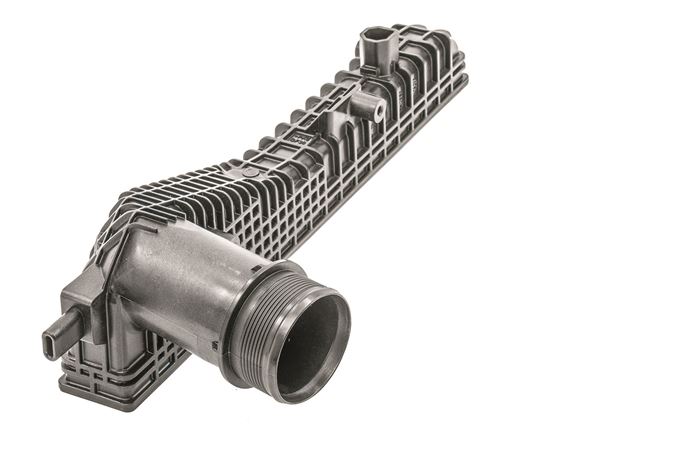

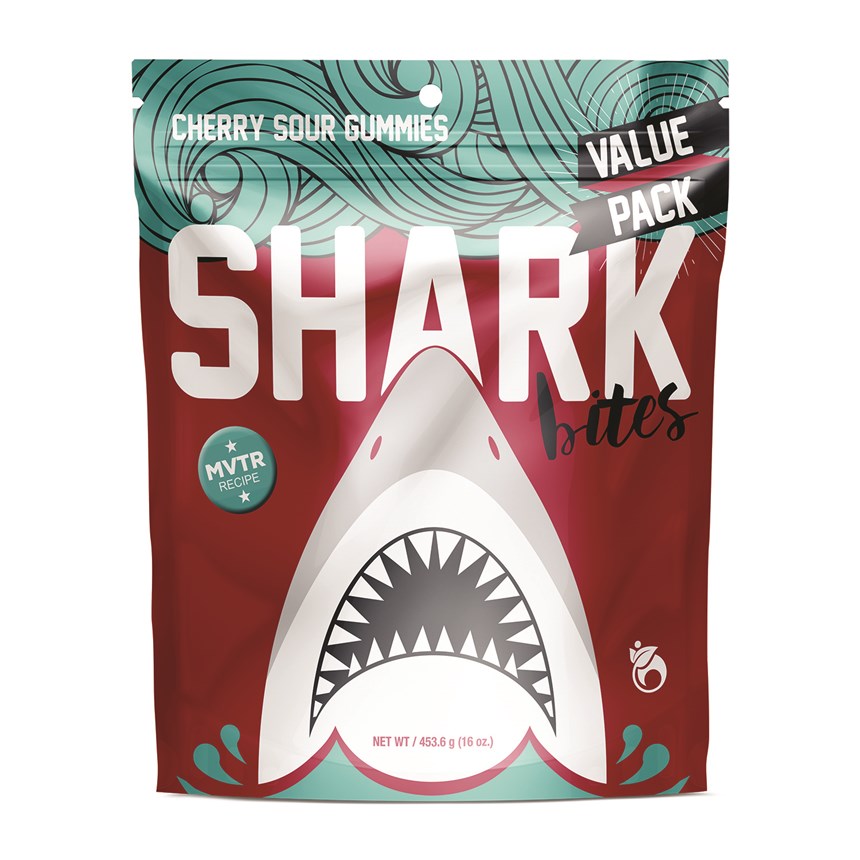

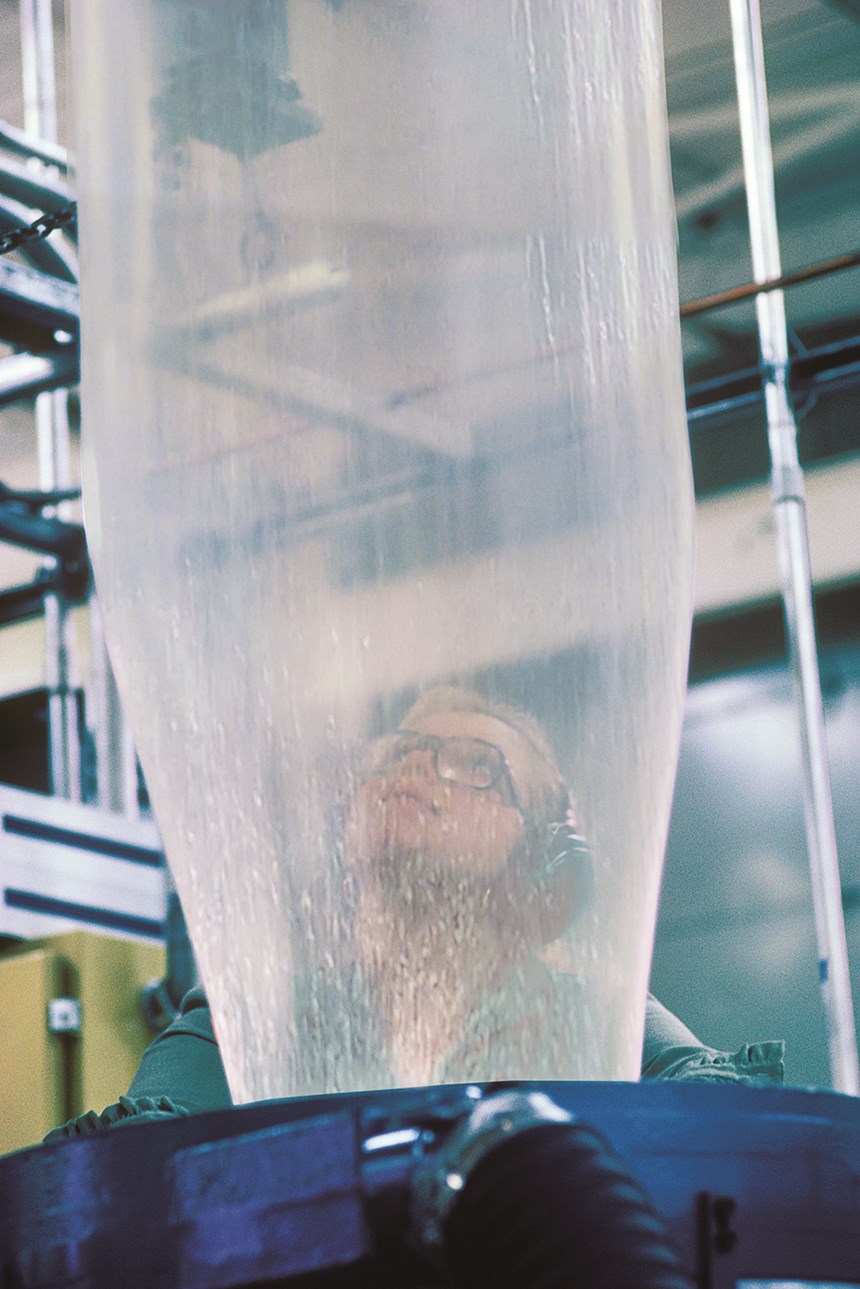


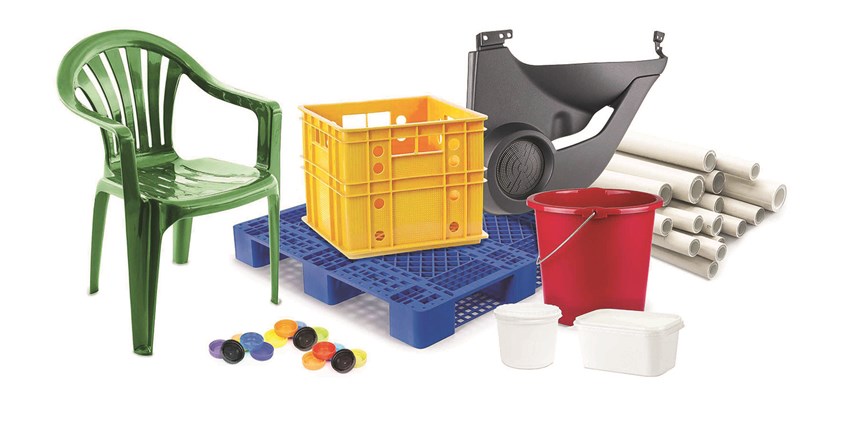











.png;maxWidth=300;quality=90)













